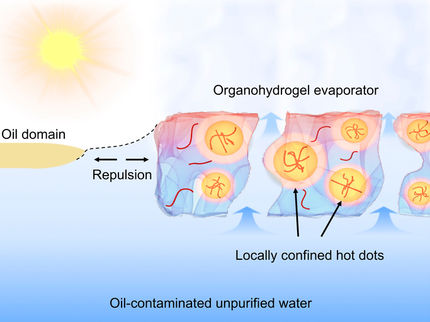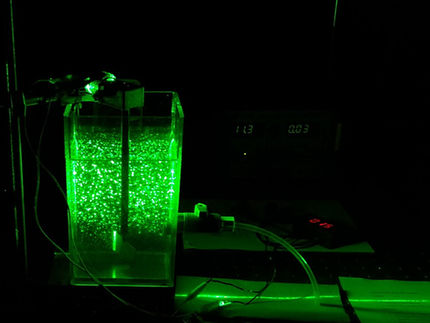Targeting PFOA threat to drinking water
Advertisement
A highly toxic water pollutant, known as perfluorooctanoic acid (PFOA), last year caused a number of U.S. communities to close their drinking water supplies. Because of its historical use in Teflon production and other industrial processes as well as its environmental persistence, PFOA contamination is a pervasive problem worldwide.
A Northwestern University-led research team now reports an inexpensive and renewable material that rapidly removes PFOA from water. The novel treatment effectively eliminates the micropollutant to below 10 parts per trillion, far below Environmental Protection Agency and all state health advisory limits.
"Our material fully extracts the pollutant out of water," said William Dichtel, an expert in organic and polymer chemistry who led the study. "The polymer contains sites that bind PFOA strongly, which strips this pollutant out of water even when present at extremely low concentrations. The binding sites are joined together by linkers that further enhance the affinity for PFOA."
Dichtel, the Robert L. Letsinger Professor of Chemistry at Northwestern's Weinberg College of Arts and Sciences, believes the material can support water purification efforts to rid drinking water of PFOA and perhaps other per- and polyfluorinated alkyl substances (PFASs), such as perfluorooctanesulfonic acid (PFOS).
The PFOA material and Dichtel's polymer technology are being developed for commercial use by CycloPure, Inc., a company co-founded by Dichtel.
The EPA's 2016 advisory limit for the combined concentration of PFOA and PFOS in drinking water is 70 parts per trillion, which is equal to one teaspoon of PFOA in 14 Olympic-sized swimming pools. Negative health effects have been noted at lower concentrations than the EPA advisory limit in extensive studies of PFOA exposure. At least four states -- Minnesota, New Hampshire, New Jersey and Vermont -- have implemented limits of at least half the EPA limit.
The polymer can be regenerated and reused multiple times. Only a modest amount of the material is needed to capture and remove PFOA to less than 10 parts per trillion.
"Our findings demonstrate the selectivity of this type of polymer can be tailored to target pollutants of interest, in this case PFOA," Dichtel said. "The material has more than 10 times higher affinity for PFOA than activated carbon, a conventional treatment method with several known deficiencies."
The networked polymer is made from joining smaller molecules with tiny pores, and selectivity is programmed into the material through a crosslinked monomer. The main component, beta-cyclodextrin, is a naturally occurring bio-renewable sugar molecule derived from cornstarch.
In many communities -- often those near industrial sites, military installations and airports -- PFOA levels exceed the EPA's advisory limit. In 2016, Hoosick Falls, New York, and Bennington, Vermont, declared states of emergency because of PFOA-contaminated drinking water.
As testing of drinking water supplies for PFOA and PFOS becomes broadly mandated, as recently legislated in the state of New York, the detection of trace amounts of PFOA, PFOS and other PFASs is expected to be widespread in the years ahead.




























































